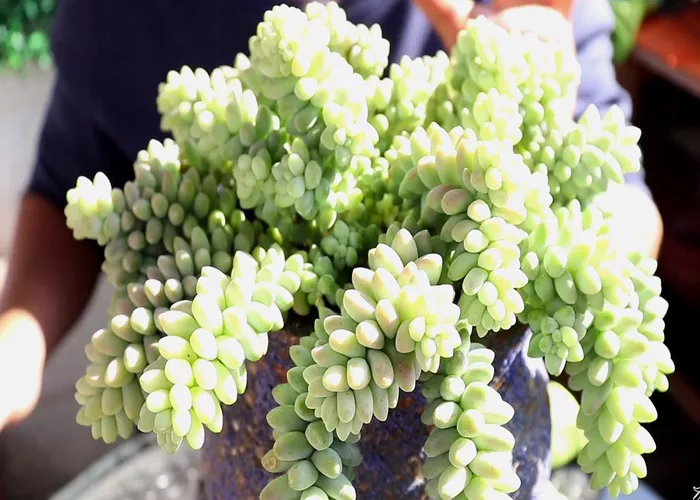Succulent plants are known for their unique shapes, vibrant colors, and ability to thrive in a variety of conditions. Many succulents, particularly those in the genera such as Echeveria, Sedum, and Graptoveria, have the remarkable ability to flower. While these blooms can be a delightful surprise, they also require special care and attention. This guide will provide you with a comprehensive understanding of how to deal with flowering succulent plants, from recognizing the signs of flowering to post-bloom care.
Section 1: Understanding Succulent Flowering
1. The Biology of Flowering
Flowering in succulents is a natural part of their reproductive cycle. When conditions are favorable, succulents will produce flowers to attract pollinators and facilitate seed production. Flowering can occur at any time of the year, depending on the species and environmental conditions.
2. Signs of Flowering
Growth of a Flower Stalk: Succulents will produce a flower stalk, also known as an inflorescence, that emerges from the center of the plant or from the base.
Change in Leaf Color: Some succulents may show a change in leaf color or texture as they prepare to flower.
Slower Growth: The plant may grow more slowly as it directs its energy towards flowering.
3. Factors Influencing Flowering
Lighting: Adequate sunlight is crucial for flowering in many succulents.
Temperature: Warm temperatures can stimulate flowering in some species.
Watering: Proper watering can encourage flowering, but overwatering can lead to problems.
Nutrition: A balanced fertilizer can provide the necessary nutrients to support flowering.
Section 2: Preparing for Flowering
1. Identifying the Flower Stalk
Identifying the flower stalk is the first step in preparing for flowering. The stalk may emerge from the center of the plant or from the base, and it will gradually grow taller, producing buds that will eventually bloom.
2. Supporting the Flower Stalk
As the flower stalk grows, it may need support to prevent it from breaking or becoming damaged. You can use garden stakes or twine to gently tie the stalk to the pot or nearby structures.
3. Adjusting Care
Lighting: Ensure that the plant receives adequate sunlight, as this will help the flowers develop properly.
Watering: Water the plant as usual, but be careful not to overwater, as this can cause the roots to rot.
Fertilization: Apply a balanced fertilizer to provide the necessary nutrients for flowering.
Section 3: Caring for Flowering Succulents
1. Pollination
If you wish to encourage seed production, you can hand-pollinate the flowers. This involves transferring pollen from the male part of the flower (the stamen) to the female part (the stigma). Pollination can be done using a soft brush or a cotton swab.
2. Monitoring for Pests and Diseases
Flowering succulents may be more susceptible to pests and diseases. Keep a close eye on the plant for signs of pests, such as aphids or mealybugs, and treat them promptly. Watch for signs of disease, such as discoloration or wilting, and address any issues as soon as possible.
3. Maintaining Humidity
Some succulents may require higher humidity levels during flowering. You can increase humidity by placing the plant on a tray of pebbles with water, or by using a humidifier.
Section 4: Post-Bloom Care
1. Removing the Flower Stalk
After the flowers have faded, you can remove the flower stalk to prevent the plant from wasting energy on seed production. Use clean, sharp pruning tools to cut the stalk close to the base of the plant.
2. Feeding the Plant
After flowering, the plant may require additional nutrients to recover. Apply a balanced fertilizer to provide the necessary nutrients for growth and development.
3. Pruning
Some succulents may develop dead or damaged leaves after flowering. Remove these leaves to prevent the plant from becoming stressed and to promote healthy new growth.
4. Monitoring Growth
Keep a close eye on the plant for signs of stress or poor growth. Adjust your care routine as needed to ensure that the plant remains healthy and happy.
Conclusion
Flowering in succulent plants is a beautiful and natural part of their life cycle. By understanding the biology of flowering, preparing for it, and providing the necessary care, you can enjoy the stunning blooms of your succulents while ensuring their long-term health and happiness. Remember to remove the flower stalk after flowering, feed the plant, prune any dead or damaged leaves, and monitor its growth. With proper care, your succulents will continue to thrive and bloom beautifully for years to come.


